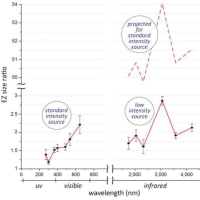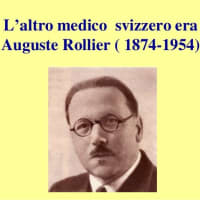日本人の生活習慣と心血管疾患の研究成果をまとめたレビュー(英文)が出版されています。
このレビューの中から、生活習慣と心血管疾患、特に食習慣、運動、喫煙に関する部分を翻訳しましたのでご紹介します。
人の健康の基本は、食生活、身体運動、心の健康ですから、この情報は役に立つと思われます。
https://www.jstage.jst.go.jp/article/jat/18/2/18_6866/_pdf
J Atheroscler Thromb, 2011; 18:83-88.
Lifestyle and Cardiovascular Disease in Japan 日本のライフスタイルと心血管疾患
Hiroyasu Iso
Department of Social and Environmental Medicine, Osaka University Graduate School of Medicine, Osaka, Japan
大阪大学大学院医学系研究科 社会医学講座 環境医学
Relationships between Lifestyle and Cardiovascular Disease
生活習慣と心血管疾患の関係
Sodium and Potassium Intakeナトリウムとカリウムの摂取
According to a 13-year population-based cohort study of 58,730 Japanese aged 40—79 years (JACC study) 16), sodium intake was positively associated with mortality from total stroke, ischemic stroke, and total cardiovascular disease.
40〜79歳の日本人58,730人を対象とした13年間の集団ベースのコホート研究(JACC研究)16)によると、ナトリウム摂取は総脳卒中、虚血性脳卒中、総心血管疾患による死亡率と正の相関がありました。
Multivariable hazard ratios for the highest versus lowest quintiles of sodium intake were 1.55 (95% CI, 1.21—2.00; p for trend=0.001) for total stroke, 2.04 (1.41—2.94; p for trend=0.001) for ischemic stroke, and 1.42 (1.20—1.69; p for trend: 0.001) for total cardiovascular disease.
ナトリウム摂取量の最高五分位と最低五分位の多変量ハザード比は、総脳卒中で1.55(95%CI、1.21-2.00;傾向p= 0.001)、虚血性脳卒中で2.04(1.41-2.94;傾向p= 0.001)、心血管疾患全体の1.42(1.20〜1.69;傾向p=0.001)。
Potassium intake was inversely associated with mortality from CHD and total cardiovascular disease.
カリウム摂取量は、CHDによる死亡率と心血管疾患全体に反比例しました。
The multivariable hazard ratios for the highest versus the lowest quintiles of potassium intake were 0.65 (95% CI, 0.39—1.06; p for trend=0.083) for CHD and 0.73 (0.59—0.92; p for trend=0.018) for total cardiovascular disease.
カリウム摂取の最高五分位と最低五分位の多変量ハザード比は、CHDで0.65(95%CI、0.39—1.06;傾向p= 0.083)、心血管疾患全体で0.73(0.59—0.92;傾向p= 0.018)でした。
A recent report of the JPHC Study has shown that the amount rather than concentrations of sodium in the diet has an adverse effect on stroke risk17).
JPHC研究の最近の報告は、食事中のナトリウムの濃度ではなく量が脳卒中リスクに悪影響を与えることを示しています17)。
Calcium Intakeカルシウム摂取
Another report of the JACC study showed that dietary intake of total calcium tended to be inversely associated with mortality from total stroke but not from CHD or total cardiovascular disease for both men and women.
JACC研究の別の報告では、男性と女性の両方で、総カルシウムの食事摂取量は総脳卒中による死亡率と逆相関する傾向がありましたが、CHDまたは総心血管疾患によるものではないことが示されました。
The associations with cardiovascular disease were more evident for dairy than for non-dairy calcium intake.
心血管疾患との関連は、非乳製品のカルシウム摂取よりも乳製品の方が明白でした。
The multivariable hazard ratios for men with highest versus lowest quintiles of dairy calcium intake were 0.53 (95% CI, 0.34 to 0.81) for total stroke, 0.46 (0.23 to 0.91) for hemorrhagic stroke, and 0.53 (0.29 to 0.99) for ischemic stroke;
乳製品のカルシウム摂取の五分位が最高と最低の男性の多変量ハザード比は、脳卒中全体で0.53(95%CI、0.34から0.81)、出血性脳卒中で0.46(0.23から0.91)、虚血性脳卒中で0.53(0.29から0.99)でした;
the corresponding hazard ratios for women were 0.57 (0.38 to 0.86), 0.51 (0.28 to 0.94), and 0.50 (0.27 to 0.95) 18).
女性の対応するハザード比は0.57(0.38から0.86)、0.51(0.28から0.94)、および0.50(0.27から0.95)でした18)。
We also investigated the association between dairy calcium intake and the incidence of cardiovascular disease during the 13-year followup for a JPHC study of 41,526 Japanese men and women age 40-59 years19).
また、40〜59歳の日本人男女41,526人を対象としたJPHC研究の13年間の追跡調査中に、乳製品のカルシウム摂取と心血管疾患の発生率との関連を調査しました19)。
Dairy calcium intake was found to be inversely associated with risks of total and ischemic stroke with respective multivariable hazard ratios (95% CIs) of 0.69 (0.56 to 0.85; p for trend=0.007) and 0.69 (0.52 to 0.93; p for trend=0.05).
乳製品のカルシウム摂取は、総脳卒中および虚血性脳卒中のリスクと逆相関し、それぞれの多変数ハザード比(95%CI)は0.69(0.56から0.85;傾向p = 0.007)および0.69(0.52から0.93;傾向p=p 0.05)。
Dietary calcium intake was not associated with the risk of CHD.
食事によるカルシウム摂取はCHDのリスクと関連していませんでした
Animal Protein Intake動物性タンパク質の摂取
A population-based, cross-sectional study of 7,585 men and women aged 40-69 years in five communities showed that dietary animal protein intake, estimated on the basis of a single 24-h dietary recall, was associated with blood pressure levels after adjustment for age, sex, community, body mass index, antihypertensive medication use, ethanol intake, smoking, and dietary intakes of sodium, potassium, and calcium 20).
5つのコミュニティの40〜69歳の男性と女性7,585人を対象とした人口ベースの横断的研究では、1回の24時間の食事の思い出しに基づいて推定される食事動物性タンパク質摂取量が、年齢、性別、コミュニティ、肥満度指数BMI、降圧薬の使用、エタノール摂取、喫煙、およびナトリウム、カリウム、カルシウムの食事摂取で調整後の血圧レベルと関連していることが示されました20)。
A 19.9g/d increment in animal protein intake was associated with a decrease in systolic blood pressure of 1.09 mm Hg (p<0.001) and in diastolic blood pressure of 0.41 mm Hg (p=0.003).
動物のタンパク質摂取量の19.9g /日の増加は、収縮期血圧の1.09 mm Hgの減少(p <0.001)および拡張期血圧の0.41 mm Hgの減少(p = 0.003)に関連していました。
Further adjustment for nutritional factors weakened the associations, but the inverse associations of animal protein intake with systolic blood pressure remained statistically significant.
栄養因子をさらに調整すると関連性が弱まりましたが、動物のタンパク質摂取と収縮期血圧の逆相関は統計的に有意なままでした。
The findings of a 14-year prospective study of 4,775 men and women aged 40-69 years indicated that animal protein intake tends to be inversely associated with the risk of intraparenchymal hemorrhage, since the hazard ratio with a one-standard deviation increase in animal protein intake (17.6 g/day) was 0.79 (95% CI, 0.61-1.02;p=0.07)21).
40-69歳の男女4,775人を対象とした14年間の前向き研究の結果は、動物タンパク質摂取の標準偏差が1つ(17.6 g /日)増加すると、ハザード比が0.79(95%CI、0.61-1.02; p = 0.07)であるため、動物タンパク質の摂取は実質内出血のリスクと逆相関する傾向があることを示しました21)。
Intake of Fish and ω-3-polyunsaturated Fatty Acids
魚およびω-3-多価不飽和脂肪酸の摂取
According to an 11-year follow-up of the JPHC Study of 41,578 men and women aged 40 to 59 year 22), dietary intake of fish and ω3-polyunsaturated fatty acids (PUFA) was inversely associated with the risk of CHD.
40歳から59歳の男女41,578人のJPHC研究の11年間の追跡調査22)によれば、魚およびω3-多価不飽和脂肪酸(PUFA)の食事摂取はCHDのリスクと逆相関していた。
Multivariate hazard ratios for the highest (8 times per week, or median intake 180 g/d) versus the lowest (once a week, or median intake 23 g/d) quintiles of fish intake were 0.63 (95%CI, 0.38-1.04) for total CHD, 0.44 (0.24—0.81) for definite myocardial infarction, and 1.14 (0.36—3.63) for sudden cardiac death.
魚摂取の五分位数が最高(週に8回、または摂取量の中央値180 g /日)対最低(週に1回、または摂取量の中央値23 g 日)の多変量ハザード比は、総CHDで0.63(95%CI、0.38-1.04 )、明確な心筋梗塞で0.44(0.24〜0.81)、心臓突然死で1.14(0.36〜3.63)です。
Stronger inverse associations existed between the dietary intake of ω-3 polyunsaturated fatty acids (PUFA) and risk of definite myocardial infarction with an HR of 0.35 (0.18 to 0.66) and nonfatal coronary events with an HR of 0.33 (0.17 to 0.63).
ω-3多価不飽和脂肪酸(PUFA)の食事摂取と、0.35(0.18から0.66)のHRを伴う明確な心筋梗塞のリスクと、0.33(0.17から0.63)の致命的でない冠動脈イベントとの間に、より強い逆相関が存在しました。
In a 13-year follow—up of the JACC Study of 57,972 men and women aged 40-79 years23), we found that fish and ω-3 PUFA intakes was inversely associated with mortality from total cardiovascular disease and manifestly so for mortality from heart failure.
57,972人のJACC研究の13年間の追跡調査では23)、魚とω-3PUFAの摂取量は心血管疾患の死亡率と逆相関し、そして心不全の死亡率と明らかに逆相関していることがわかりました。
Multivariate hazard ratios (95%CI) for highest versus lowest quintiles were 0.76 (0.53—1.09) for fish and 0.58 (0.36-0.9.) for ω-3 PUFA.
最高と最低の五分位の多変量ハザード比(95%CI)は、魚が0.76(0.53〜1.09)、ω-3PUFAが0.58(0.36〜0.9)でした。
Physical Activity身体活動
The JACC Study of 7,3265 men and women aged 40-79 years24) indicated that men and women who reported the highest category of physical activity in (i.e., walking ≧1 hour/day or doing sports ≧5 hours/week) had lower mortality from cardiovascular disease than did those in the second lowest physical activity category (i.e., walking 0.5 hour/day, or sports participation for 1-2 hours/week).
40歳から79歳の7,3265人の男性と女性のJACC研究24)では、身体活動の最も高いカテゴリ(つまり、1日あたり1時間以上のウォーキングまたは週5時間以上のスポーツ)を報告した男性および女性の方が、2番目に低い身体活動カテゴリ(すなわち、1日0.5時間の歩行、または週1-2時間のスポーツ参加)よりも、心血管疾患による死亡率が低かった。
Multivariate hazard ratios for the highest versus the second lowest categories of walking or sports participation were 0.71 (95%CI, 0.54—0.94) and 0.80 (0.48-1.31), respectively, for ischemic stroke, 0.84 (0.64-1.09) and 0.51 (0.32—0.82) for CHD, and 0.84 (0.75-0.95) and 0.73 (0.60-0.90) for total cardiovascular disease.
歩行またはスポーツへの参加の最高カテゴリと2番目に低いカテゴリの多変量ハザード比率は、虚血性脳卒中の場合、それぞれ0.71(95%CI、0.54〜0.94)および0.80(0.48-1.31)、CHDでは0.84(0.64-1.09)および0.51(0.32〜0.82)、心血管疾患全体の場合は0.84(0.75〜0.95)と0.73(0.60〜0.90)でした。
As a surrogate marker of physical activity, we examined body mass index and its effect on cardiovascular disease.
身体活動の代理マーカーとして、ボディマス指数BMIと心血管疾患への影響を調べました。
A 10-year follow-up of the JACC Study for 104,928 men and women aged 40-79 years25) indicated that compared with persons with a body mass index (BMI) 23.0 to 24.9, those with BMI ≧27.0 kg/m2 had a higher risk of CHD, with the respective multivariate relative risks (95% CI) for men and women being 2.05 (1.35 to 3.13) and 1.58 (0.95 to 2.62).
40〜79歳の男女104,928人を対象としたJACC研究の10年間の追跡調査25)では、ボディマス指数(BMI)が23.0〜24.9の人と比較して、BMI≧27.0 kg / m2の人がCHDのリスクがより高いことが示され、男性と女性のそれぞれの多変量相対リスク(95%CI)は2.05(1.35〜3.13)および1.58(0.95〜2.62)です。
Persons with BMI <18.5 kg/m2 had a higher risk of total stroke and intraparenchymal hemorrhage, with the respective multivariate relative risk for men and women being 1.29 (1.01 to 1.49) and 1.92 (1.49 to 2.47) for total stroke and 1.96 (1.16 to 3.31) and 2.32 (1.36 to 3.97) for intraparenchymal hemorrhage, respectively.
BMI <18.5 kg / m2の人は、脳卒中および実質内出血のリスクが高く、男性と女性のそれぞれの多変量相対リスクは、全脳卒中で1.29(1.01〜1.49)および1.92(1.49〜2.47)であり、実質内出血で1.96(1.16~3.31)および2.32(1.36〜3.97)でした。
An 11-year follow-up of the JPHC Study of 43,235 men and 47,444 women aged 40-69 years added to the evidence that weight gain is associated with an increased risk of CHD26).
40〜69歳の男性43,235人と女性47,444人のJPHC研究の11年間の追跡調査は、体重増加がCHDのリスク増加と関連しているという証拠を追加しました26)。
When weight change was examined according to BMI at the age of 20 years, men with an initial BMI <2l.7 kg/m2 who gained more than 10 kg compared with men with no weight change had a twofold higher risk of CHD.
20歳のBMIに従って体重変化を調べたところ、体重変化のない男性と比較して、10 kg以上増加した初期BMI <21.7 kg / m2の男性は、CHDのリスクが2倍高かった。
Alcohol Consumption飲酒
An 11-year follow-up of the JPHC Study of 19,544 men aged 40 to 59 years27) showed that alcohol consumption was associated with an elevated risk of total stroke for drinkers with an alcohol intake of 450 g ethanol per week compared with occasional drinkers.
40歳から59歳の男性19,544人を対象としたJPHC研究の11年間のフォローアップ27)では、アルコール消費量は、たまに飲酒する人と比較して、1週間当たり450gのアルコールを摂取する飲酒者の総脳卒中リスクの上昇と関連していることが示されました。
This excess risk was confined primarily to hemorrhagic stroke with a multivariable HR of 2.15 (95% CI: 1.22-3.79).
この過剰リスクは、主に出血性脳卒中に限定され、多変量HR 2.15(95%CI:1.22-3.79)でした。
There was a lower risk of ischemic stroke, more specifically lacunar infarction, a higher risk of hemorrhagic stroke, and no excess risk of total stroke for drinkers with an intake of 1 to 149 g ethanol per week compared with occasional drinkers.
たまに飲酒する人と比較して、1から149 gのエタノールを飲んでいる飲酒者では、虚血性脳卒中、より具体的にはラクナ梗塞のリスクが低く、出血性脳卒中のリスクが高く、総脳卒中の過剰リスクはありませんでした。
The multivariate hazard ratios were 0.59 (0.37 to 0.93) for ischemic stroke, 0.43 (0.22 to 0.87) for lacunar infarction, 1.73 (0.98 to 3.07) for hemorrhagic stroke, and 0.98 (0.71 to 1.36) for total stroke.
多変量ハザード比は、虚血性脳卒中では0.59(0.37から0.93)、ラクナ梗塞では0.43(0.22から0.87)、出血性脳卒中では1.73(0.98から3.07)、脳卒中全体では0.98(0.71から1.36)でした。
We further examined whether the protective effect of light-to-moderate alcohol consumption on the risk of ischemic stroke was affected by social support28).
さらに、軽度から中等度のアルコール摂取が虚血性脳卒中のリスクに及ぼす保護効果が、社会的支援の影響を受けるかどうかを調べました28)。
The multivariate hazard ratios of ischemic stroke associated with light-to-moderate alcohol consumption (1 to 299 g/wk) were 1.53 (0.95 to 2.46) for the low social support group and 0.82 (0.60 to 1.13) for the high social support group (p for interaction=0.002).
軽度から中度のアルコール消費(1から299 g / 週)に関連する虚血性脳卒中の多変量ハザード比は、低ソーシャルサポートグループで1.53(0.95から2.46)、高ソーシャルサポートグループで0.82(0.60から1.13)でした(相互作用のp = 0.002)。
There was no association between alcohol consumption and social support in relation to the risk of CHD.
アルコール消費とCHDのリスクに関連するソーシャルサポートとの間に関連はありませんでした。
Alcohol consumption is strongly and inversely associated with the risk of CHD.
アルコール消費は、CHDのリスクと強く逆に関連しています。
Smoking and Smoking Cessation喫煙と禁煙
Smoking was found to be associated with an elevated risk of stroke, more specifically, subarachnoid hemorrhage and ischemic stroke.
喫煙は、脳卒中、より具体的にはクモ膜下出血と虚血性脳卒中のリスクの上昇と関連していることがわかっています。
An 11-year follow-up of the JPHC Study of 41,282 men and women aged 40 to 59 years29) showed that the multivariate hazard ratios (95% CI) for current smokers compared with never-smokers were 1.27 (1.05 to 1.54) for total stroke, 3.60 (1.62 to 8.01) for subarachnoid hemorrhage, and 1.66 (1.25 to 2.20) for ischemic stroke.
40歳から59歳の男女41,282人を対象としたJPHC研究の11年間の追跡調査29)では、現在の喫煙者と非喫煙者の多変量ハザード比(95%CI)が、総脳卒中で1.27(1.05~1.54)、くも膜下出血の場合は3.60(1.62から8.01)、虚血性脳卒中の場合は1.66(1.25から2.20)でした。
The corresponding hazard ratios for women were 1.98 (1.42 to 2.77), 2.70 (1.45 to 5.02) and 1.57 (0.86 to 2.87).
女性の対応するハザード比は1.98(1.42から2.77)、2.70(1.45から5.02)、1.57(0.86から2.87)でした。
There was a dose-response relationship for men between the number of cigarettes smoked and risks of ischemic stroke, lacunar infarction and large-artery occlusive infarction but not embolic infarction.
喫煙本数と虚血性脳卒中、ラクナ梗塞および大動脈閉塞性梗塞のリスクとの間には、男性では用量反応関係がありましたが、塞栓性梗塞ではありませんでした。
Another report of the JPHC study30) showed that smoking was strongly and positively associated with the risk of CHD, as has been reported universally.
JPHC研究の別の報告30)は、一般的に報告されているように、喫煙がCHDのリスクと強く正に関連していることを示しました。
According to a 10-year follow-up of the JACC Study of 94,683 men and women aged 40-79 years31), the decline in the risk for CHD and total cardiovascular disease started to take effect within 2 years and for total stroke 2-4 years after smoking cessation.
40〜79歳の男女94,683人を対象としたJACC研究の10年間の追跡調査31)によれば、CHDおよび総心血管疾患のリスクの低下は禁煙後2年以内、そして総脳卒中は2〜4年後に現れ始めました。
For every endpoint and for both age subgroups (40-64 and 65-79 years), most of the benefit of cessation occurred 10-14 years after cessation, indicating the importance of smoking cessation at any age to prevent cardiovascular disease.
全てのエンドポイントおよび両方の年齢サブグループ(40〜64および65〜79歳)で、禁煙の利点のほとんどは禁煙後10〜14年で発生し、心血管疾患を予防するためにあらゆる年齢で禁煙が重要であることを示します。
A recent pooled analysis of 300,000 men and women aged 40-79 years confirmed that the HR for ex-smokers compared with current smokers in relation to the time elapsed since smoking cessation started to decrease approximately 5 years after smoking cessation, and had reached, the same level as the HR for lifelong non-smokers approximately 10 years after smoking cessation for both men and women32).
40-79歳の300,000人の男性と女性の最近のプール分析により、禁煙から経過した時間に関連して、禁煙者のHRは現在の喫煙者と比較して、禁煙後約5年で減少し始めることが確認され、そして男性と女性の両方とも禁煙して約10年後に、生涯非喫煙者のHRと同じレベルに達しました32)。
In conclusion, we have presented an overview of the distinctive trends for mortality, incidence of stroke and CHD in Japan.
結論として、日本における死亡率、脳卒中とCHDの発生率の特徴的な傾向の概要を示しました。
Although it is hard to predict future CHD trends in Japan, middle-aged men, especially in urban areas, may be vulnerable to an CHD epidemic, which would present major issues for both public health and clinical practice.
日本の将来のCHDの傾向を予測することは困難ですが、中年男性、特に都市部では、CHDの流行に脆弱である可能性があり、これは公衆衛生と臨床診療の両方に大きな問題をもたらします。
This work was presented at 17 July, 2009 on the 41st annual scientific meeting of the Japan Atherosclerosis Society, message from subcommittee (subcommittee for Lifestyle Habit).
この研究は、2009年7月17日、日本アテローム性動脈硬化学会の第41回年次学術会議、小委員会(生活習慣小委員会)からのメッセージで発表されました。
























